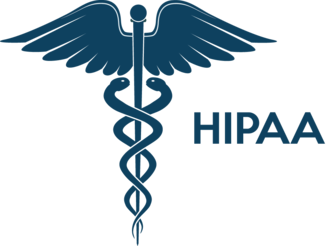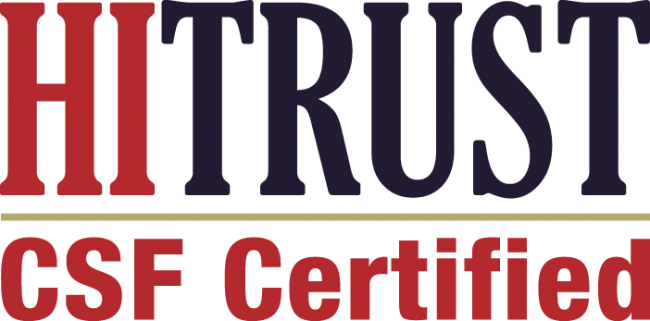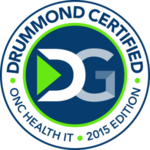Hospital readmissions within 30 days of discharge represent one of the most significant challenges facing the American healthcare system today. Beyond the human cost of repeated hospitalizations, the financial burden is staggering, with avoidable Medicare expenditures exceeding $17 billion annually. For healthcare providers, the stakes have never been higher, as Medicare’s Hospital Readmissions Reduction Program continues to penalize hospitals with excessive readmission rates while rewarding those that successfully manage care transitions.
The Current State of Hospital Readmissions
The statistics paint a sobering picture of the readmission crisis. Approximately 20% of Medicare beneficiaries experience readmission within 30 days of discharge, a figure that has remained stubbornly persistent despite years of focused intervention efforts. This translates to millions of patients cycling back through hospital doors, often due to preventable complications or inadequate post-discharge support.
The geographic variation in readmission rates reveals significant opportunities for improvement. While states like Idaho have achieved average hospital readmission rates as low as 13.3%, other regions struggle with rates that far exceed the national average. This disparity suggests that effective strategies exist but are not being uniformly implemented across the healthcare landscape.
The financial implications extend far beyond the direct costs of additional hospital stays. Under Medicare’s Hospital Readmissions Reduction Program, hospitals face payment reductions of up to 3% of their Medicare inpatient payments when their readmission rates exceed expected levels. While the average penalty may be less than 1% for most hospitals, the cumulative impact across the healthcare system represents hundreds of millions in reduced revenue, funds that could otherwise be invested in patient care improvements.
Understanding Medicare Transitional Care Management
Recognizing the critical importance of the post-discharge period, the Centers for Medicare and Medicaid Services introduced Transitional Care Management (TCM) billing codes in 2013. This program acknowledges that the 30-day period following hospital discharge represents a vulnerable window where patients face heightened risks of complications, medication errors, and care coordination failures.
Medicare TCM encompasses a comprehensive approach to post-discharge care that includes both face-to-face and non-face-to-face services. The program requires interactive contact with patients within two business days of discharge, followed by a face-to-face visit within 7 to 14 days, depending on the medical decision-making complexity of the case. Throughout this 30-day period, providers coordinate care, review discharge information, provide patient education, and ensure proper medication management.
The TCM program offers two billing codes: CPT 99495 for moderate complexity medical decision-making and CPT 99496 for high complexity cases. These codes recognize the intensive coordination required during care transitions and provide appropriate reimbursement for the comprehensive services delivered during this critical period.
Evidence-Based Impact of TCM Programs
Recent research demonstrates the tangible benefits of well-implemented TCM programs. Studies using interrupted time-series analyses have shown that TCM services significantly improve timely primary care follow-up rates. The data reveals an increased slope of timely follow-up after TCM implementation, with rates improving from 0.12% per quarter before TCM to 0.29% per quarter after implementation, a meaningful difference of 0.13%.
The financial benefits are equally compelling. Research comparing TCM and non-TCM groups found that TCM visits generated an average reimbursement of $126 per visit compared to $108 for traditional visits, based on the 2020 Medicare physician fee schedule. This payment differential, combined with workflow efficiencies that delegate appropriate tasks to clinical staff, creates a sustainable model for comprehensive post-discharge care.
Beyond financial metrics, TCM programs have demonstrated measurable improvements in patient outcomes. Studies document reduced mortality rates, decreased healthcare expenditures, and improved care coordination. The program’s emphasis on medication reconciliation, discharge planning review, and early identification of potential complications contributes to these positive outcomes.
Key Components of Successful TCM Programs
Effective TCM implementation requires a systematic approach that addresses multiple aspects of post-discharge care. The foundation begins with robust discharge planning that identifies high-risk patients who would benefit most from intensive transitional care services. This includes patients with multiple comorbidities, complex medication regimens, limited social support, or previous readmission history.
Communication represents the cornerstone of successful TCM programs. Providers must establish clear channels for obtaining and reviewing discharge information from hospitals, ensuring that critical details about the patient’s condition, treatment course, and discharge instructions are accurately transmitted. This communication extends to coordination with specialists, home health agencies, and other members of the care team.
Patient engagement strategies form another crucial element. Successful TCM programs implement proactive outreach protocols that begin within 48 hours of discharge and continue throughout the 30-day transition period. This includes medication reconciliation, symptom monitoring, and early intervention when complications arise. Patient education about warning signs and when to seek care helps prevent minor issues from escalating to readmission-level emergencies.
Technology infrastructure plays an increasingly important role in TCM success. Electronic health record integration, care coordination platforms, and patient communication tools enable providers to efficiently manage large volumes of transitional care patients while maintaining high-quality, personalized care. These systems also support the documentation requirements necessary for proper TCM billing and quality reporting.
Overcoming Implementation Challenges
Despite the clear benefits, many healthcare organizations struggle with TCM implementation. Common challenges include workflow integration, staff training, technology adoption, and sustainable financing models. Successful programs address these obstacles through systematic planning and gradual implementation.
Workflow integration requires careful consideration of existing care patterns and staff responsibilities. Many successful TCM programs delegate appropriate non-face-to-face activities to clinical staff while reserving complex medical decision-making for physicians. This approach maximizes efficiency while maintaining quality of care.
Staff training must encompass both clinical and administrative aspects of TCM delivery. Team members need to understand the clinical components of transitional care, including medication reconciliation, symptom assessment, and care coordination. Additionally, proper documentation and billing procedures require specialized training to ensure compliance and maximize revenue capture.
Technology adoption can be facilitated through phased implementation approaches that allow staff to gradually adapt to new systems and workflows. User-friendly interfaces and comprehensive training programs help overcome resistance to change while ensuring that technology enhances rather than complicates care delivery.
Quality Metrics and Continuous Improvement
Successful TCM programs implement robust quality monitoring systems that track both process and outcome measures. Key metrics include timeliness of initial contact, completion rates for face-to-face visits, medication reconciliation accuracy, and ultimately, readmission rates for TCM patients compared to control groups.
Regular analysis of these metrics enables continuous improvement through identification of successful practices and areas needing enhancement. Programs that demonstrate consistent quality improvements often share common characteristics including strong leadership support, clear accountability structures, and regular team communication about performance results.
Patient satisfaction surveys provide valuable feedback about the TCM experience from the recipient’s perspective. These insights help programs refine their approaches to better meet patient needs and preferences while maintaining clinical effectiveness.
The Role of Technology Platforms
Modern TCM programs increasingly rely on sophisticated technology platforms to manage the complexity of transitional care coordination. These systems must integrate seamlessly with existing electronic health records while providing specialized functionality for TCM-specific workflows.
HealthViewX Transitional Care Management platform exemplifies the evolution of TCM technology solutions. The platform enables healthcare providers to efficiently manage both face-to-face and non-face-to-face TCM services while ensuring compliance with CMS requirements. Through its comprehensive care orchestration capabilities, HealthViewX helps providers seal gaps in healthcare delivery and capture previously lost revenue opportunities. The platform’s ability to engage transitional patients efficiently while maintaining high-quality care standards makes it an valuable tool for organizations seeking to implement or enhance their TCM programs.
Advanced platforms like HealthViewX offer features such as automated patient outreach, care plan management, medication reconciliation tools, and comprehensive documentation systems. These capabilities enable providers to scale their TCM services while maintaining the personalized attention that makes transitional care effective.
Financial Sustainability and Revenue Optimization
For TCM programs to succeed long-term, they must demonstrate financial sustainability alongside clinical effectiveness. The Medicare reimbursement structure for TCM services provides a foundation for sustainable programs, but optimization requires careful attention to workflow efficiency and proper documentation.
Successful programs often achieve sustainability through a combination of improved patient outcomes, reduced readmission penalties, and captured TCM revenue. The reduction in readmission rates not only improves patient care but also helps hospitals avoid penalties under the Hospital Readmissions Reduction Program.
Revenue optimization extends beyond direct TCM billing to include improved patient relationships, enhanced reputation, and potential participation in value-based care contracts. Providers who demonstrate expertise in managing care transitions often find themselves well-positioned for accountable care organization participation and other value-based arrangements.
Building a Culture of Transitional Care Excellence
Ultimately, successful reduction of 30-day readmission rates requires more than just implementing TCM programs, it demands a fundamental shift toward viewing care transitions as critical components of overall patient care rather than afterthoughts to hospital treatment.
Organizations that excel in transitional care management typically foster cultures that prioritize continuity of care, patient-centered service, and proactive intervention. They invest in staff training, technology infrastructure, and quality improvement processes that support these values.
The integration of TCM services into routine care patterns helps ensure that transitional care becomes a standard component of patient management rather than an add-on service reserved for the highest-risk cases. This comprehensive approach maximizes the program’s impact on readmission reduction while creating sustainable revenue streams for participating providers.
Conclusion
The challenge of reducing 30-day readmission rates requires a multifaceted approach that combines evidence-based clinical practices with effective care coordination and appropriate technology support. Medicare’s Transitional Care Management program provides both the framework and financial incentives necessary for sustainable improvement.
Healthcare organizations that embrace comprehensive TCM implementation, supported by sophisticated platforms and guided by continuous quality improvement principles, are positioned to achieve meaningful reductions in readmission rates while improving patient outcomes and financial performance. The key lies in recognizing that successful care transitions require dedicated resources, systematic approaches, and unwavering commitment to patient-centered care.
As the healthcare landscape continues to evolve toward value-based payment models, the ability to effectively manage care transitions will become increasingly critical for organizational success. Providers who master these capabilities today will be well-positioned to thrive in tomorrow’s healthcare environment while delivering the high-quality, coordinated care that patients deserve during their most vulnerable moments.








